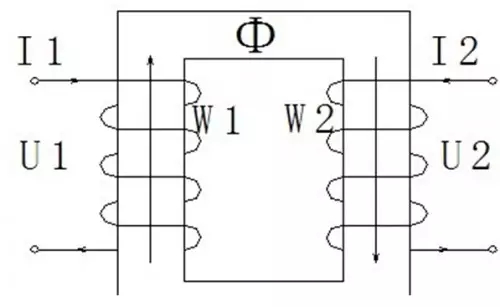Sep. 07, 2020
When developing a distributed photovoltaic power generation project, you will come into contact with the “spontaneous self-use surplus electricity” mode. Most of the access method is to connect to the low-voltage side bus of the distribution transformer of the factory area, and the generated electricity is distributed through the bus and connected to the bus. The surplus power is reversed and boosted to the grid through the transformer.
At this time, most people have the same question: Can a step-down transformer reversely step-up? Is there any bad effect on the transformer?
First, you need to understand the characteristics of the transformer. A transformer is common electrical equipment that can be used to transform a certain value of alternating voltage into another value of alternating voltage with the same frequency. A step-up transformer is a transformer used to transform a low-value alternating voltage into another higher-value alternating voltage of the same frequency, while a step-down transformer converts the higher voltage at the input of the power supply into a lower ideal voltage For the load. The principle of the transformer is to transfer the capacity through electromagnetic conversion and play the role of electrical isolation, as shown in the figure below.

I1(I2), U1(U2), W1(W2) are the current, voltage, and number of turns of the primary (secondary) winding, respectively, and the relationship between their numbers is U1/U2=W1/W2=I2/I1. Φ is the magnetic line of force generated by electromagnetic induction. The physical entity it is in is the core, which is the magnetic circuit of the transformer.
In the step-down transformer, the primary winding is high voltage and the current is small, but because Φ is generated by electromagnetic induction, the loss in it must be considered. Therefore, the primary winding voltage should reserve 5% of the loss, such as 10KV voltage, which is actually 10.5 KV; The secondary winding is low voltage and the current is large. It is necessary to consider the winding itself and the voltage drop to the load end (electric equipment). Therefore, the voltage should also be reserved for about 5% of the margin, for example, generally speaking, the 380V voltage is actually 400V on the low voltage side of the transformer.
Then, if the step-down transformer is used as a step-up transformer, the low-voltage side needs to generate electromagnetic induction, and the high-voltage side is used as the load power supply, both of which need to consider the corresponding loss. If both are reserved 5%, it can be achieved, and the inverter The output voltage of the converter has a large adjustable range, which can meet the requirements.
In other words, in principle, the step-down transformer can be used as a step-up transformer.
However, in the actual application process, the structure and protection of the step-down transformer are different from the step-up transformer. Long-term reverse use will slowly reduce the stability of the transformer and may affect its service life. Moreover, in current policies and regulatory documents, it is generally required that spontaneous self-use surplus power grid-connected projects should be used, with the proportion of self-use being greater than 50% of the electricity generated, and the connected capacity no greater than 25% of the superior transformer.
The above information is provided by the oil distribution power transformer supplier.
Contact Us
Contact us. Together with us, inspire boundless creativity
NAVIGATION
Tel: +86 312 5880165
Mob: +86 135 1322 2010
Fax: +86 312 5880165
E-mail: gracejia@zydqjt.com
Skype: +86 135 1322 2010
WhatsApp: +86 135 1322 2010
Wechat: +86 135 1322 2010
FOLLOW US
Add: Room A1109, No.483 Yulan Street, Baoding City, Hebei Province, China
